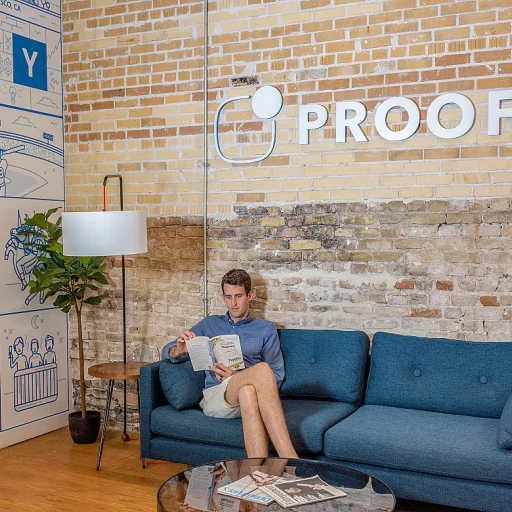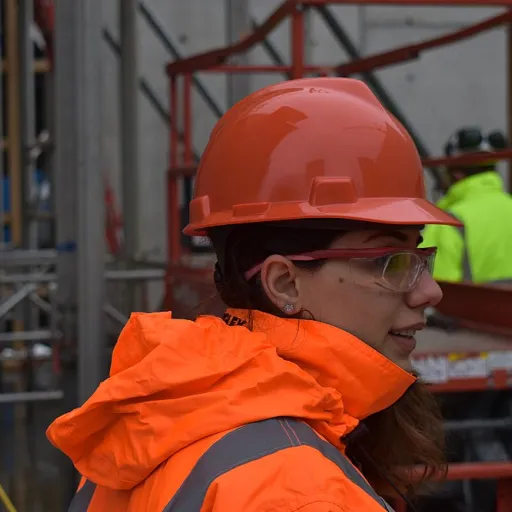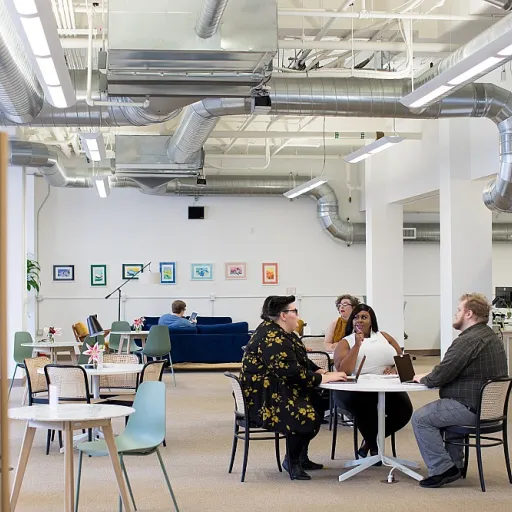
Understanding TPM Training
Decoding the Fundamentals of TPM Training
Total Productive Maintenance, commonly referred to as TPM, is a comprehensive approach geared towards maximizing the effectiveness of equipment and processes within an organization. This form of training is not limited to traditional manufacturing environments but holds substantial relevance in office management as well. As companies continuously seek ways to enhance productivity, TPM provides a framework that integrates maintenance into the operations, thereby improving performance quality and equipment effectiveness. TPM training encompasses a broad spectrum of components, starting with the focus on autonomous maintenance. Here, it empowers maintenance personnel to take ownership of routine tasks, which in turn reduces small stops and slow running issues that could potentially hinder productivity. Participants in TPM courses will learn about strategic planned maintenance that ensures minimal disruptions and a higher level of maintenance reliability. Another critical aspect of the TPM program is the idea of continuous improvement. Through this, organizations are encouraged to pursue long-term, sustainable enhancements rather than quick fixes. By understanding the total productive maintenance pillars, businesses can enhance their overall availability performance, setting a foundation for improvement across all areas. For businesses in the UK looking to delve deeper into how TPM can revolutionize office management practices, the availability of both in-person and online courses makes this training accessible for all. The best TPM training courses also address unique challenges faced by UK companies, offering a tailored approach that aligns with specific operational demands. Learn more about TPM training insights and how they can be integrated into your company's strategy. Equip yourself and your team with the knowledge and skills essential for improving your office's production capabilities and maintenance reliability.The Importance of TPM in Office Management
Significance of Total Productive Maintenance in Office Settings
Total Productive Maintenance (TPM) not only benefits production environments but also plays a vital role in enhancing office management. TPM is designed to maximize the effectiveness of equipment and processes, which directly impacts office productivity and efficiency. In office settings, TPM strategies such as autonomous maintenance and planned maintenance help improve maintenance reliability and equipment effectiveness. By focusing on continuous improvement, TPM can enhance the availability performance of office equipment, reducing small stops and slow running. This leads to improved overall equipment effectiveness (OEE) and performance quality. Implementing a TPM program allows office staff to learn best practices for maintaining and utilizing office equipment. This knowledge can be acquired through various TPM training courses, some of which are available online, offering a flexible learning process for busy professionals. The integration of TPM can lead to more productive maintenance routines, which minimizes time wasted on equipment failures and increases the quality of output. A well-rounded TPM approach ensures maintenance personnel are equipped with the tools to address both immediate issues and long-term challenges. For more specific techniques that can improve office equipment usage, you may want to explore the insights shared in mastering copier enlargement techniques in the UK office. In sum, TPM methodologies build a foundation of reliability that not only contributes to better equipment performance but also propels an office environment toward achieving its strategic goals.Addressing Unique Challenges in UK Companies
Overcoming Distinctive Hurdles in British Businesses
In UK office environments, implementing Total Productive Maintenance (TPM) programs presents a unique array of challenges that require tailored solutions. The dynamics influencing these workplaces often demand a customised approach, ensuring seamless integration of TPM pillars. Firstly, the emphasis on equipment effectiveness plays a pivotal role, as many UK companies deal with varied types of equipment that require continuous improvement strategies. The focus should be on setting up autonomous maintenance routines that maintenance personnel can easily adhere to, significantly boosting maintenance reliability and performance quality. Furthermore, office managers face specific pressure to maintain operational efficiency while managing small stops and slow running issues. Introducing planned maintenance schedules can combat these issues effectively, transforming challenges into improved availability performance. Moreover, the integration of online course offerings tailored for the office setting can aid in bridging the skills gap. Providing team members opportunities to will learn through free or low-cost online courses enhances the foundation of productive maintenance knowledge, fostering long-term improvements in OEE (Overall Equipment Effectiveness). Lastly, cultural considerations in UK office environments must not be overlooked. Embracing a culture of total productive maintenance involves engaging all staff levels to take part in the TPM program actively. This culture shift is crucial for long-term success and is achieved through continuous and proactive learning initiatives. For those looking to delve deeper into similar integration challenges, further insights can be found in the processes of project integration management in UK companies. This approach, coupled with a relentless focus on continuous enhancement, will align British companies with best practices in maintenance reliability.Implementing TPM Training in Your Office
Practical Steps for Implementing TPM Training
Introducing Total Productive Maintenance (TPM) into your office environment can significantly elevate the efficiency and reliability of your equipment and processes. To ensure successful implementation, consider the following practical steps:- Conduct a Needs Assessment: Evaluate your current equipment efficiency and maintenance strategies. Identify the "small stops" and slow running issues that affect your overall equipment effectiveness (OEE). This will help tailor the TPM program to suit your unique requirements.
- Engage Your Team: Empower your staff by involving them in the TPM process. Encourage participation in autonomous maintenance activities, allowing employees to gain insights into equipment performance and maintenance reliability. By doing so, you'll foster a culture of continuous improvement and proactivity.
- Select Appropriate Courses: Choose TPM training programs that cater specifically to office environments. Online courses offer flexibility and can educate your team on the core TPM pillars like planned maintenance, productive maintenance, and maximizing availability performance.
- Implement Pilot Programs: Start with a pilot program to test your approaches and evaluate results. This initial phase will allow you to adjust your strategies and ensure long-term success.
- Monitor and Measure Performance: Regularly assess the impact of TPM on your operations by measuring performance quality and reliability. Use data to identify areas requiring further improvement and optimize the program.
Case Studies of Successful TPM Implementation
Real-Life Applications of TPM: Success Stories
In the landscape of UK companies, Total Productive Maintenance (TPM) training is becoming increasingly vital to achieving optimal office efficiency. Let's explore some notable case studies that highlight successful implementation, demonstrating how TPM can be the key to unlocking peak performance quality.
One company in the manufacturing sector introduced autonomous maintenance to empower its maintenance personnel with the skills needed to perform routine checks on their equipment effectively. This not only minimized small stops and slow running issues but also reinforced the importance of maintenance reliability. The result was improved overall equipment effectiveness (OEE), boosting availability performance by a significant percentage.
In another instance, a service-oriented firm embraced the TPM program technique to streamline its office operations. By integrating planned maintenance practices, the office management was able to drastically reduce downtime while maintaining maintenance tpm reliability in the long term. The focus on continuous improvement created an environment where staff were more engaged and better equipped, leading to noticeable improvements in production and service outcomes.
Moreover, businesses that have utilized online courses for TPM learning report a swift translation of course content into actionable strategies. Employees who have completed these program courses often learn to identify inefficiencies swiftly, fostering a culture of best practices that ensures maintenance and equipment quality at every level.
The positive impact of TPM training is not limited to individual companies but extends to the overall industry, setting new standards for total productive maintenance. These case studies underscore TPM as a critical investment in enhancing not just production but the holistic quality and maintenance tpm of business operations.













